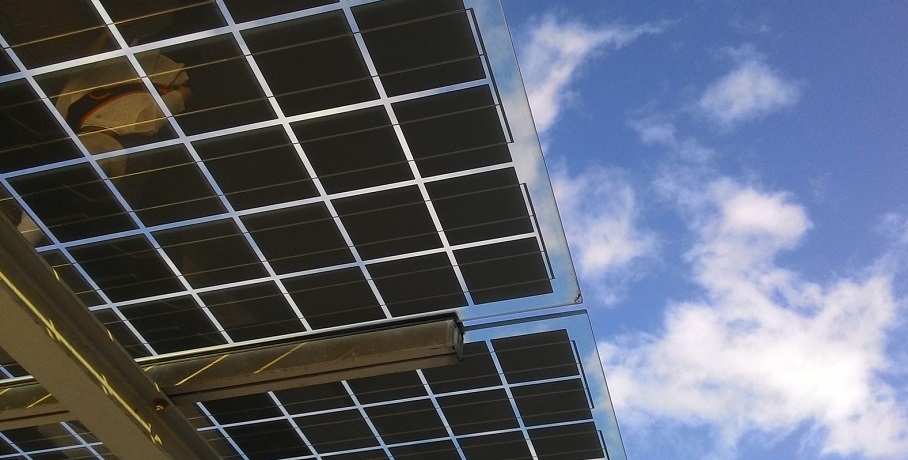
Solving Electric Grid’s “Last Mile” With Distributed Fuel Cells
February 4, 2020Despite prolific focus on battery electric vehicles (BEV’s) for widespread decarbonization of transportation, a significant problem remains largely ignored.
A limiting factor is for BEV adoption is the capacity for distributing electricity wherever electrical infrastructure is practically immutable on quick timeframes; the “last mile” problem.
This photo I took shows an example of legacy urban electrical infrastructure. If several nearby households switch to BEV’s the grid will overload; triggering electrical outages. Where utility monopolies have a loose grip and sunshine is strong through the seasons, roof-top solar panels will help. Another “last mile” solution is using hydrogen fuel cells at homes and offices; where the extra electricity is needed for BEV’s, and water is useful.
Two main fuel cell paths achieve this; at home fuel cells, and fuel cell vehicles. Both can power houses and charge up nearby BEV’s.
Canada’s Environment Minister has a mandate that 10% of vehicles sold in Canada in 2025 must be Zero Emissions Vehicles (ZEV’s). The mandate escalates until 2040 when all vehicles sold must be ZEV’s. The front-runners to meet this mandate seem to be hydrogen vehicles (HV’s) and BEV’s. Some countries are much more aggressive on ZEV timelines so this challenge is common to many countries.
Fortunately, demand is shifting toward ZEV’s anyway given compelling options exemplified by Ford F350 equivalence. Prior to the announcement of 1000+ horsepower electric vehicles like Cybrtrk and Hummer, a perception existed that electric vehicles are less capable, less fun, and annoying to “fill-up” with electrons than carbon-fuel vehicles. But charge-time improvements and high-powered BEV’s exacerbate the “last mile” problem if everyone goes full-electric.
Cybrtrk points to new paths. I mentioned some in prior articles posted on LinkedIn, but have not rolled this one out yet; Cybrtrk suggests a case where at home fuel cells are a good solution to the “last mile” electricity problem. I used to say “if I have a hydrogen fuel cell pick-up truck and plug it in, it will power my house and charge my neighbours’ electric car”. While not wrong, I don’t see it as the main answer anymore. I assumed a significant mix of HV’s would be required to meet mandates for zero emissions vehicles (ZEV’s), because of the “last mile” problem. This is especially true in places that have electrical grid vulnerabilities or reliability issues.
I find myself thinking a lot about the challenge of hydrogen transportation, since Proton Technologies can make huge volumes of H2 for about 10 cents per kg. Having hydrogen where it is needed in the near term at small-scale is arguably easier by simply making H2 where needed through electrolysis. But I believe our future will have abundant, low-cost hydrogen so my focus is on large-scale H2 use.
Turbines adding electricity to the grid can offset or replace carbon fuels, since H2 can be made a lot cheaper than natural gas using methods like Proton Technologies has, but to completely decarbonize our society while economically solving the “last mile” problem, the large-scale solution is H2 pipelines. One implication of an assumed expanding network of H2 pipelines, is that home-based fuel cells are a key enabler for widespread rapid adoption of BEV’s. One advantage of stationary fuel cells vs vehicle fuel cells, is that H2 does not need to be pressurized so much. Ideally, if there is an electrical grid outage from a snowstorm, fire, or coronal mass ejection, everyone can make their own electricity at home using H2. Simple redundancy.
Many countries have introduced mandates that natural gas supplies be part hydrogen. Some of this H2 can be stripped out at houses upstream of the furnace and diverted into fuel cells or fuel cell vehicles. More importantly, several new communities are being built and more planned which will have only 100% hydrogen supply, making the “last mile” problem much easier to solve. I advise that new oil and gas pipelines everywhere should be H2-capable to be inexpensively future-proof. When consumers realize they can buy hydrogen cheaper than natural gas per joule of energy, the demand switch can be quick like the transition from whale oil to kerosene. There’s no downside to installing pipes that are hydrogen capable.
As the cost, efficiency, and convenience of BEV’s continues to improve, some advantages of personal-use HV’s over BEV’s become questionable. Given that today BEV’s can be ordered that have 1000 miles of range, with likely improvements ahead, what portion of us will rush to buy personal use HV’s to help solve our collective “last mile” problem? The answer may be that it depends on the local arbitrage since HV’s produce electricity and water from H2. A related challenge; although a HV can theoretically be parked next to a Cybrtrk and charge it up, or power a house, thereby solving the “last mile” problem, to my knowledge that functionality is not yet being offered on personal use HV’s.
If a home has solar panels, a hydrogen pipeline connection, a fuel cell, an electrical grid connection, and an electrolyser, there is flexibility for making or using both hydrogen fuel and electricity. Whatever ways we envision the future, whatever mix of carbonless solutions we plan for, we should assume huge volumes of very low cost hydrogen will be available soon.
For those wondering about my prior Cybrtrk articles, the highlights are; Cybrtrk is designed for the planet Mars which has almost no atmospheric pressure, so Cybrtrk will also be able to travel at supersonic speeds with through air-evacuated tunnels at low friction (think Hyperloop and Boring Company). I also believe Cybrtrk will have a submarine option. I want one, and I continue to also want an H2 fuel-cell pick-up that is absurdly large and great.
About the Author…
 Chairman and CEO at Proton Technologies
Chairman and CEO at Proton Technologies
During his engineering Master’s degree, he was a former student of Dr. Ian Gates and has remained close friends for the last 16 years or so, and they together recognize that a hydrogen economy is the eventual zenith of the world’s energy continuum. They also firmly believe that Proton Technologies has a quickly scalable non-CO2 solution that leverages existing infrastructure, with the lowest negative environmental impact. From space shuttle main engines, to high-tech manufacturing, hydrogen is a key feedstock for blooming energy and materials in a healthy direction.
LinkedIn Profile: linkedin.com/in/grant-strem-017aa112/
Company Website: www.proton.energy
CREDENTIALS
B.Sc. Geology, University of Calgary
M.Sc. Geology and Geophysics, Specialization in Reservoir Characterization



 With over 15 years of reporting hydrogen news, we are your premier source for the latest updates and insights in hydrogen and renewable energy.
With over 15 years of reporting hydrogen news, we are your premier source for the latest updates and insights in hydrogen and renewable energy.
nice article to think about, but there is no tech to produce ” H2 for about 10 cents per kg “
Yes of course there is. http://www.proton.energy